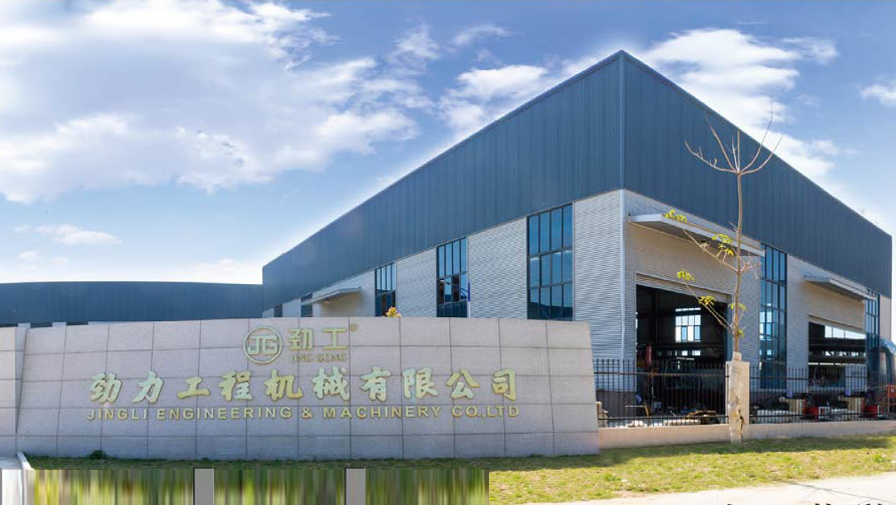
Online Inquiry
Tips for using excavators in various operations
TIME:2021-06-07 00:00
1. Excavator operation technology:
First, confirm the surrounding conditions. When rotating, it is necessary to have a clear understanding of the surrounding obstacles and terrain and operate safely; During operation, it is necessary to confirm the front and rear directions of the track to avoid tipping or impact; Try not to face the final drive towards the excavation direction, otherwise it may damage the walking motor or hose; During operation, it is necessary to ensure that the left and right tracks are in complete contact with the ground to improve the dynamic stability of the entire machine.
2. Effective mining methods:
When the bucket cylinder and connecting rod, as well as the stick cylinder and the stick are at a 90 degree angle to each other, the excavation force is high; When the bucket teeth maintain a 30 degree angle with the ground, the excavation force, i.e. the cutting resistance, is small; When excavating with a stick, ensure that the angle range of the stick is between 45 degrees from the front to 30 degrees from the back. Using both the boom and bucket simultaneously can improve excavation efficiency.
3. Excavation of Rock:
Excavating rocks with a bucket can cause significant damage to the machine and should be avoided as much as possible; When excavating, the position of the machine body should be adjusted according to the direction of the rock crack, so that the bucket can smoothly enter and excavate; Insert the bucket teeth into the rock cracks and excavate with the digging force of the bucket rod and bucket (pay attention to the slipping of the bucket teeth); Rock that has not been broken should be broken before using a bucket for excavation.
4. Slope leveling operation:
When carrying out surface trimming, the machine should be placed flat on the ground to prevent the body from shaking. It is crucial to grasp the coordination of the movements of the boom and bucket, and control the speed of both is crucial for surface trimming.
5. Loading job:
The body should be in a horizontal and stable position, otherwise it is difficult to accurately control the rotation and unloading, thereby extending the working cycle time; Maintain an appropriate distance between the body and the truck to prevent the rear of the body from colliding with the truck during a 180 degree rotation; Try to install it by turning left as much as possible, which provides a wide field of view and high work efficiency. At the same time, it is necessary to correctly grasp the rotation angle to reduce the time used for turning; The location of the truck is lower than that of the excavator to shorten the boom lifting time and ensure good visibility; First load sand, gravel, and then place large stones to reduce impact on the vehicle body.
6. Work in soft areas or water:
When working in soft soil areas, it is necessary to understand the degree of soil compaction and pay attention to limiting the excavation range of the bucket to prevent accidents such as landslides and collapses, as well as deeper vehicle subsidence.
When working in water, attention should be paid to the allowable water depth range of the vehicle body (the water surface should be below the center of the carrier roller); If the horizontal plane is high, the internal lubrication of the slewing bearing will be poor due to the entry of water, the engine fan blades will be damaged due to water impact, and electrical circuit components will have short circuits or open circuits due to water intrusion.
7. Hoisting operations:
When using a hydraulic excavator for lifting operations, the surrounding conditions of the lifting site should be confirmed, high-strength lifting hooks and steel wire ropes should be used, and special lifting devices should be used as much as possible during lifting; The operation mode should be micro operation mode, and the actions should be slow and balanced; The length of the lifting rope is appropriate, and if it is too long, it will cause the lifting object to swing significantly and be difficult to accurately control; Correctly adjust the position of the bucket to prevent the steel wire rope from slipping; Construction personnel should try not to approach the lifting object as much as possible to prevent danger due to improper operation.
8. Smooth operation method:
When working, the stability of the machine can not only improve work efficiency and extend the lifespan of the machine, but also ensure operational safety (by placing the machine on a relatively flat surface); The drive sprocket has better stability on the rear side than on the front side, and can prevent the final drive from being hit by external forces; The wheelbase of the track on the ground is always greater than the wheelbase, so the stability of working forward is good, and lateral operation should be avoided as much as possible; Keep the excavation point close to the machine to improve stability and excavators; If the excavation point is far away from the machine, causing the center of gravity to move forward, the operation will be unstable; Lateral excavation has poorer stability than forward excavation. If the excavation point is far from the center of the body, the machine will be more unstable. Therefore, the excavation point should be kept at a suitable distance from the center of the body to ensure balanced and efficient operation.










